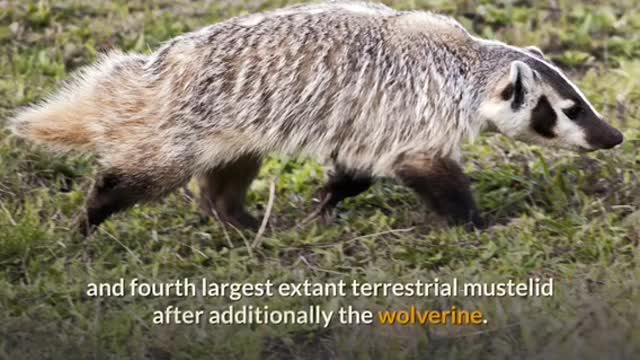Premium Only Content

Honey Badger || Description, Characteristics and Facts!
The honey badger (Mellivora capensis), also known as the ratel, is a mammal widely distributed in Africa, Southwest Asia, and the Indian subcontinent. Because of its wide range and occurrence in a variety of habitats, it is listed as Least Concern on the IUCN Red List.
It is the only species in the genus Mellivora and in the mustelid subfamily Mellivorinae. Despite its name, the honey badger does not closely resemble other badger species; instead, it bears more anatomical similarities to weasels. It is primarily a carnivorous species and has few natural predators because of its thick skin, strength and ferocious defensive abilities.
The honey badger has a fairly long body, but is distinctly thick-set and broad across the back. Its skin is remarkably loose, and allows it to turn and twist freely within it. The skin around the neck is 6 millimetres (0.24 in) thick, an adaptation to fighting conspecifics. The head is small and flat, with a short muzzle. The eyes are small, and the ears are little more than ridges on the skin, another possible adaptation to avoiding damage while fighting.
The honey badger has short and sturdy legs, with five toes on each foot. The feet are armed with very strong claws, which are short on the hind legs and remarkably long on the forelimbs. It is a partially plantigrade animal whose soles are thickly padded and naked up to the wrists. The tail is short and is covered in long hairs, save for below the base.
Honey badgers are the largest terrestrial mustelids in Africa. Adults measure 23 to 28 cm (9.1 to 11.0 in) in shoulder height and 55–77 cm (22–30 in) in body length, with the tail adding another 12–30 cm (4.7–11.8 in). Females are smaller than males. In Africa, males weigh 9 to 16 kg (20 to 35 lb) while females weigh 5 to 10 kg (11 to 22 lb) on average. The mean weight of adult honey badgers from different areas has been reported at anywhere between 6.4 to 12 kg (14 to 26 lb), with a median of roughly 9 kg (20 lb), per various studies. This positions it as the third largest known badger, after the European badger and hog badger, and fourth largest extant terrestrial mustelid after additionally the wolverine. However, the average weight of three wild females from Iraq was reported as 18 kg (40 lb), about the typical size of the males from largest-bodied populations of wolverines or from male European badgers in late autumn, indicating that they can attain much larger than typical sizes in favorable conditions. However, an adult female and two males in India were relatively small, at the respective weights of 6.4 kg (14 lb) and a median of 8.4 kg (19 lb). Skull length is 13.9–14.5 cm (5.5–5.7 in) in males and 13 cm (5.1 in) for females.
-
 LIVE
LIVE
Caleb Hammer
1 hour agoGaslighting. Toxic. B*tch. | Financial Audit
92 watching -
 LIVE
LIVE
Viss
1 hour ago🔴LIVE - Positioning, Tactics, Strategy How To PUBG! - PUBG 101
114 watching -
 LIVE
LIVE
The Big Mig™
3 hours agoThe Return Of Law & Order w/ Sheriff Mack
5,057 watching -
 LIVE
LIVE
Major League Fishing
7 days agoLIVE! - Fishing Clash Team Series: Challenge Cup - Day 6
207 watching -
 46:02
46:02
Barry Cunningham
17 hours agoWhat Are They Not Telling Us About These Drugs?
4.07K3 -
 LIVE
LIVE
Badlands Media
10 hours agoBadlands Daily: August 29, 2025
3,644 watching -
 39:49
39:49
Randi Hipper
1 hour agoBITCOIN BULL MARKET ENDING EARLY? PRICE UPDATE
30 -
 LIVE
LIVE
Total Horse Channel
3 hours ago2025 Gypsy Congress Championship Show | Friday
37 watching -
 2:41:50
2:41:50
Matt Kohrs
9 hours agoMarket Open Chaos: PCE Inflation Report & Payday Friday || Live Trading
15K1 -
 17:35
17:35
itsSeanDaniel
2 hours agoPro-Transgender Doctor HUMILIATED by Genius Conservative
6.91K15